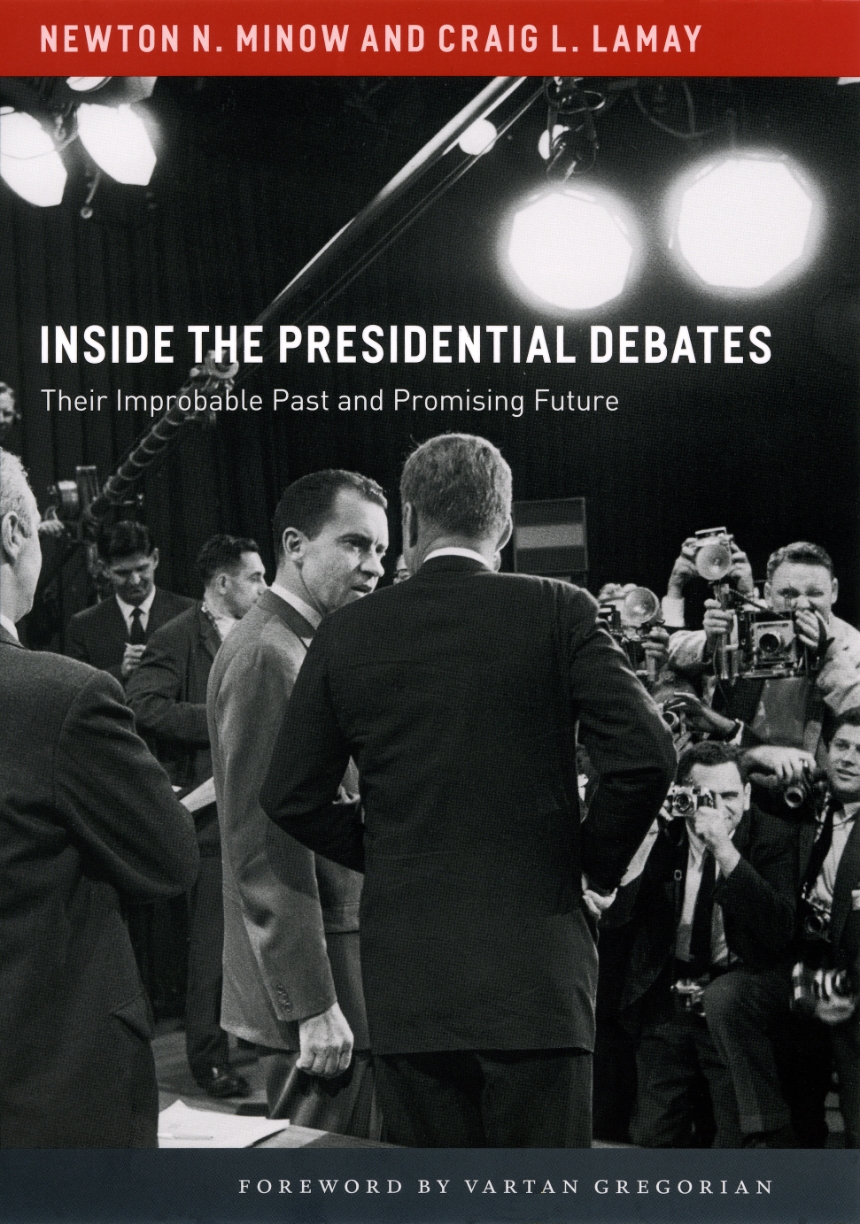Inside the Presidential Debates
Their Improbable Past and Promising Future
9780226434322
9780226530390
Inside the Presidential Debates
Their Improbable Past and Promising Future
Newton Minow’s long engagement with the world of television began nearly fifty years ago when President Kennedy appointed him chairman of the Federal Communications Commission. As its head, Minow would famously dub TV a “vast wasteland,” thus inaugurating a career dedicated to reforming television to better serve the public interest. Since then, he has been chairman of PBS and on the board of CBS and elsewhere, but his most lasting contribution remains his leadership on televised presidential debates. He was assistant counsel to Illinois governor Adlai Stevenson when Stevenson first proposed the idea of the debates in 1960; he served as cochair of the presidential debates in 1976 and 1980; and he helped create and is currently vice chairman of the Commission on Presidential Debates, which has organized the debates for the last two decades.
Written with longtime collaborator Craig LaMay, this fascinating history offers readers for the first time a genuinely inside look into the origins of the presidential debates and the many battles—both legal and personal—that have determined who has been allowed to debate and under what circumstances. The authors do not dismiss the criticism of the presidential debates in recent years but do come down solidly in favor of them, arguing that they are one of the great accomplishments of modern American electoral politics. As they remind us, the debates were once unique in the democratic world, are now emulated across the globe, and they offer the public the only real chance to see the candidates speak in direct response to one another in a discussion of major social, economic, and foreign policy issues.
Looking to the challenges posed by third-party candidates and the emergence of new media such as YouTube, Minow and LaMay ultimately make recommendations for the future, calling for the debates to become less formal, with candidates allowed to question each other and citizens allowed to question candidates directly. They also explore the many ways in which the Internet might serve to broaden the debates’ appeal and informative power. Whether it’s Clinton or Obama vs. McCain, Inside the Presidential Debates will be welcomed in 2008 by anyone interested in where this crucial part of our democracy is headed—and how it got there.
240 pages | 31 tables | 6 x 9 | © 2008
History: American History
Political Science: Political Behavior and Public Opinion
Reviews
Table of Contents
Foreword by Vartan Gregorian
Acknowledgments
Introduction
Chapter 1 How Adlai Stevenson Put John F. Kennedy in the White House
Chapter 2 Presidential Debates and “Equal Opportunity”
Chapter 3 “If You’re Thirty-two Points Behind, What Else Are You Going to Do?”
Chapter 4 The Commission on Presidential Debates and Its Critics
Chapter 5 The Dilemma: Who Debates?
Chapter 6 How to Improve the Presidential Debates
Appendixes
A Memorandum of Understanding between the Bush and Kerry Campaigns, 2004
B Negotiated Agreements between the League of Women Voters and the Ford and Carter Campaigns, 1976
C Section 312 of the Communications Act: “Reasonable Access” for Candidates for Federal Office
D Challenges to the CPD under Federal Election and Tax Law
E Broadcast Debates and the First Amendment
F The Televised Presidential Debates, 1960–2004
Notes
Index
Acknowledgments
Introduction
Chapter 1 How Adlai Stevenson Put John F. Kennedy in the White House
Chapter 2 Presidential Debates and “Equal Opportunity”
Chapter 3 “If You’re Thirty-two Points Behind, What Else Are You Going to Do?”
Chapter 4 The Commission on Presidential Debates and Its Critics
Chapter 5 The Dilemma: Who Debates?
Chapter 6 How to Improve the Presidential Debates
Appendixes
A Memorandum of Understanding between the Bush and Kerry Campaigns, 2004
B Negotiated Agreements between the League of Women Voters and the Ford and Carter Campaigns, 1976
C Section 312 of the Communications Act: “Reasonable Access” for Candidates for Federal Office
D Challenges to the CPD under Federal Election and Tax Law
E Broadcast Debates and the First Amendment
F The Televised Presidential Debates, 1960–2004
Notes
Index
